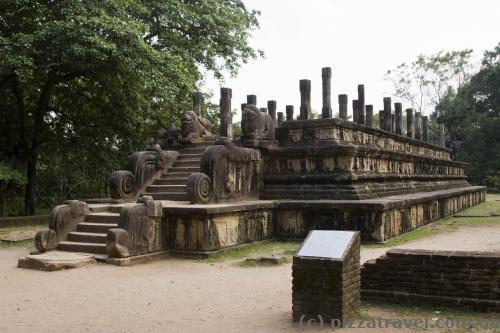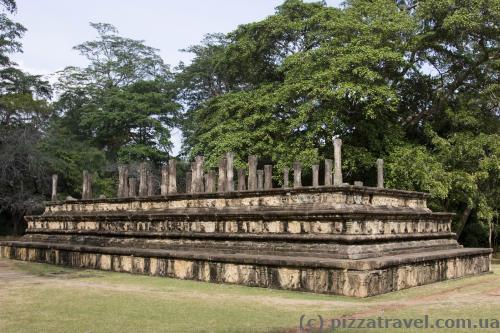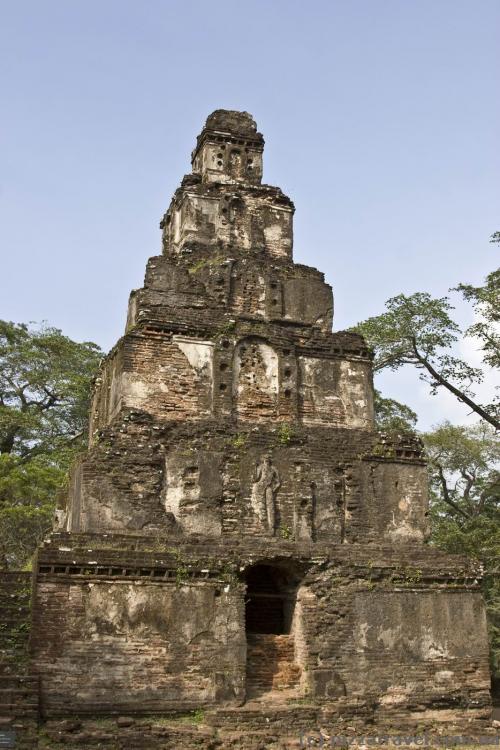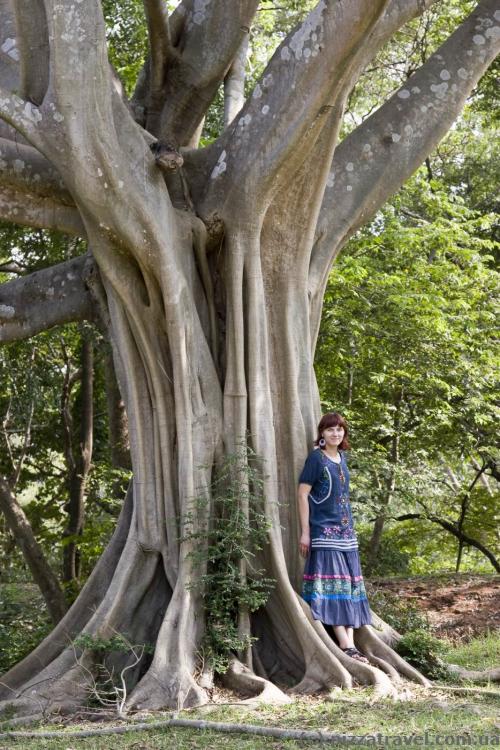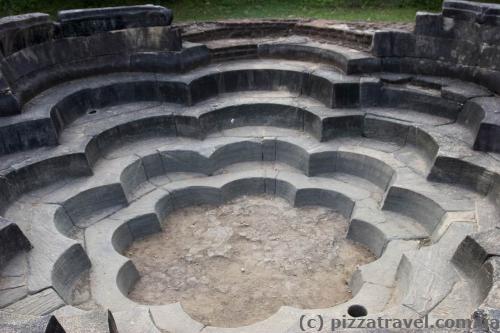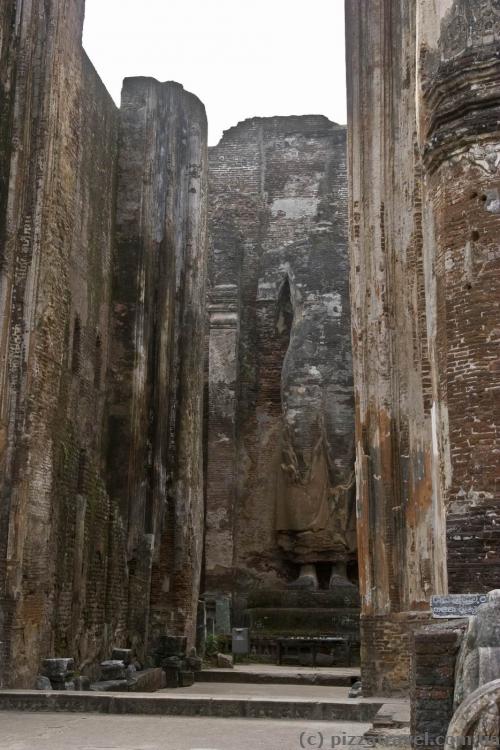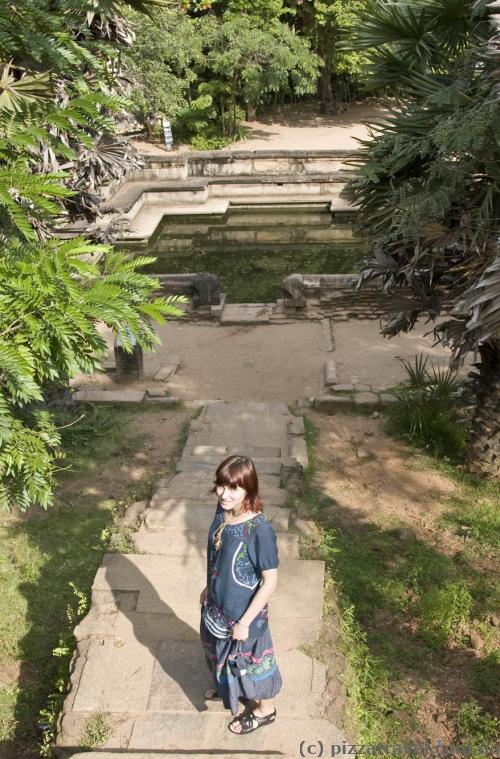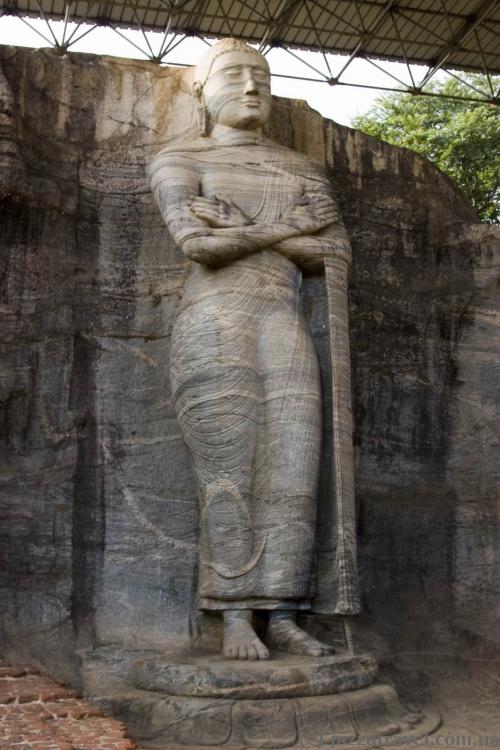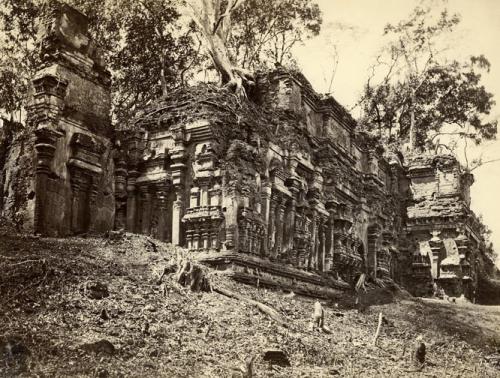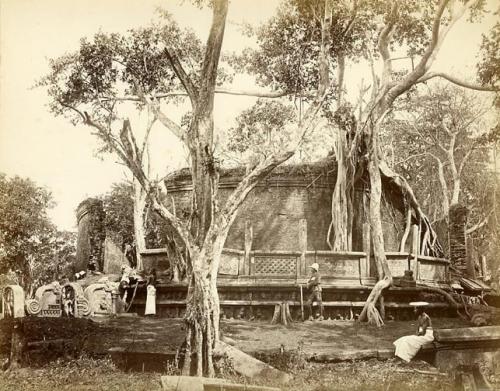Polonnaruwa is the second sacred city in Sri Lanka. After plundering of Anuradhapura, from 1070 to 1293, Polonnaruwa was the capital of the island. But the monarchs used the young city as their residence from the VII century. The most important buildings were erected during the reign of King Parakramabahu I (Parakramabahu the Great, 1153-1186). Many buildings have survived pretty well so far. Having lost the status of the capital in 1293, the city was overgrown with jungle and was discovered by the British in the XIX century.
We first visited the Archaeological Museum and then went for a walk through the streets of the ancient city. In contrast to Anuradhapura the number of tourists was larger here, but still we examined almost all objects on our own. It's possible to see various animals between the ruins, such as deer, it's very unusual. But even more unusual was the reaction of local children to us. Basically, such reaction is all over Sri Lanka, but here we met several groups of children from primary school, so we received special attention :)
We were on the car, but if you arrive by public transport, rent the bicycles on the main street of the city and ride around the old city on them, as the territory is quite large. You can rent a Tuk Tuk for $5-10 for 3 hours.
One of the most magnificent buildings is the Vatadage Temple. It is not known when it was built. It was used to store the Tooth Relic and a begging bowl.
Along the perimeter of the ancient King's Council Chamber (audience hall) of King Parakramabahu I different elephants are depicted. Entrance to the hall is very picturesque with sculptures of elephants, dragons and a moonstone.
The main attraction is the rock temple Gal Vilhara with four Buddhas carved from a single piece of granite in the 12th century.

The reclining image, which depicts the Buddha's parinirvana, is the largest in Gal Vihara. ©Yuriy Buriak
And some interesting photos of Polonnaruwa made in the years when it was just found.
Ticket price is $25.
Map of Polonnaruwa
Getting there: There is the Kaduruwela railway station near the city. Train from Colombo goes about 6-7 hours, there are wagons of all three classes. There is a regular bus service to Kandy (through Dambulla, approximately 4 hours), Colombo (6 hours) and Anuradhapura (3 hours). The bus station is in Kaduruwela, about 5 kilometers from the sacred city, although the buses pass through the historic center. If you are traveling to Polonnaruwa, better get off in the old city, but if you leave, then it's a good idea to go to Kaduruwela, to be sure that you will be sitting in the bus. There is a regular bus service between the bus station and the old city.



